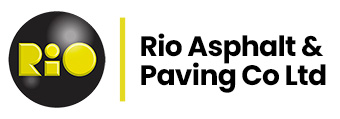
Liquid cold applied roofing systems have been in use in the UK since the mid-1980s. Initially based on polyurethane and polyester resins, their market impact was gradual, as many specifiers preferred traditional bituminous-based products.
However, with increasing restrictions on hot works and the growing demand for flat roof space to accommodate utilities and communication equipment, liquid systems have steadily gained popularity, challenging the dominance of conventional roofing methods.
Led by industry pioneers such as Liquid Plastics Ltd and Triflex UK Ltd, liquid systems have secured a strong foothold in the market. Their unique benefits have driven their rising adoption, making them a preferred choice for many roofing applications.
Key Benefits of Liquid Cold Applied Roofing Systems
- Cold Applied – These systems eliminate the hazards associated with hot works, significantly reducing fire risks on roofing projects.
- Liquid Applied – The ability to apply the system as a liquid ensures seamless waterproofing, even in complex roof details and congested spaces.
- Seamless Membrane – Once cured, the liquid resin forms a continuous, joint-free membrane that eliminates common failure points in sheet-based systems.
- Elastomeric Properties – The flexibility of the resin allows the membrane to expand and contract with the building, effectively bridging settlement cracks without compromising waterproofing.
- Insulant Compatibility – These systems work effectively with modern insulation materials such as EPS, XPS, and phenolic foam.
- Design Flexibility – The lightweight and resilient nature of liquid cold applied systems makes them suitable for various flat roof designs, including submerged, green, inverted, and warm roofs.
Key Features of Liquid Cold Applied Roofing Systems
- Seamless Application – The liquid application ensures a homogeneous, fully bonded waterproof layer with no weak points for water penetration.
- Versatility – Suitable for a wide range of applications, including flat roofs, balconies, and walkways.
- Durability – Many liquid systems offer a life expectancy of up to 25 years, making them a long-term roofing solution.
- Fully Bonded – These systems create a fully adhered waterproof membrane, preventing water from tracking beneath the surface.
- Customizable Options – A range of colors, finishes, and guarantees are available to match specific project needs and aesthetic preferences.
Additional Advantages
- Ease of Application – The cold-applied process is safer and more accessible than traditional hot-applied methods, allowing installation in areas where other roofing systems may not be feasible.
- Quick Curing – Many liquid systems cure rapidly, enabling faster project completion.
- Environmentally Friendly – These systems often produce lower emissions compared to conventional roofing methods, contributing to a more sustainable construction approach.
Conclusion
Liquid cold applied roofing systems offer a modern, high-performance solution for waterproofing flat roofs and other structures. Their combination of durability, ease of application, and environmental benefits makes them an increasingly attractive alternative to traditional roofing methods. With a proven track record and a growing market presence, these systems continue to redefine the standards of roofing technology.
